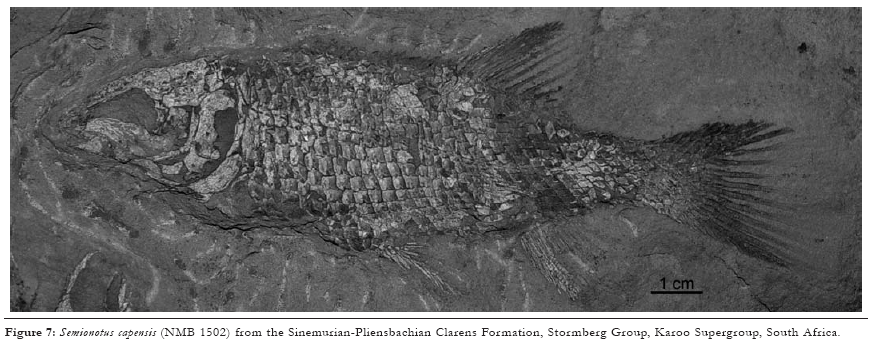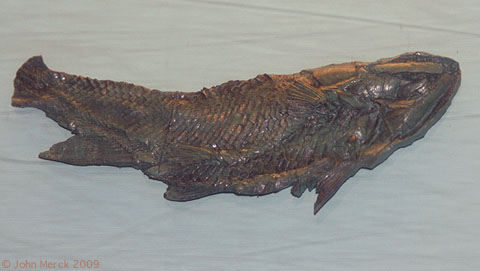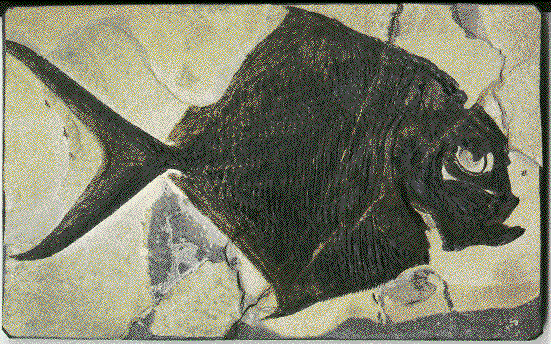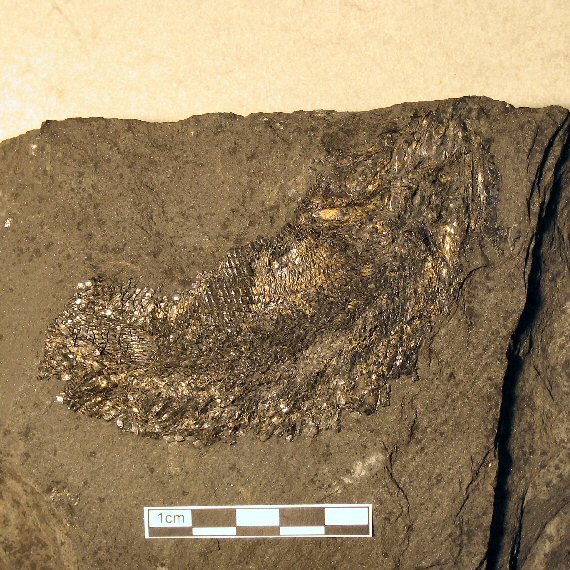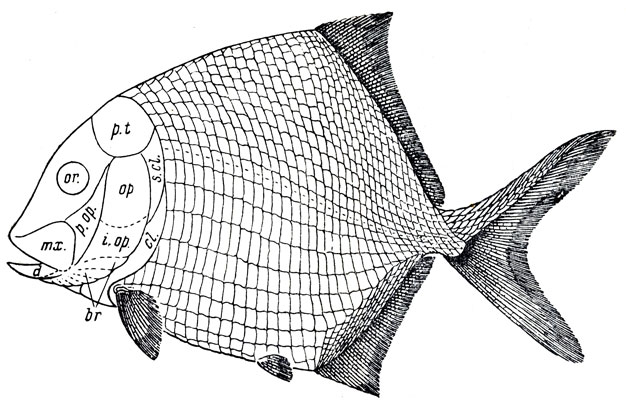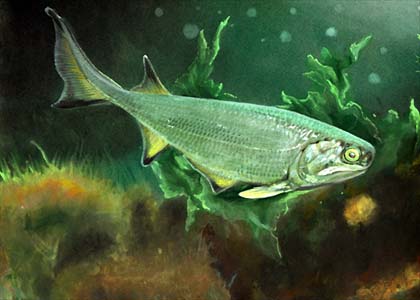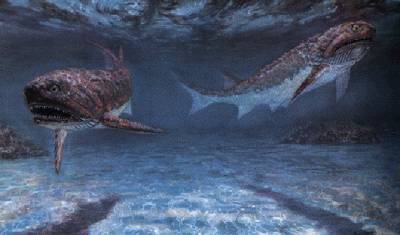[Recent Entries][Archive][Friends][User Info]
Below are 12 entries, after skipping 20 most recent ones in the "Сообщество, посвящённое ра" journal:| April 4th, 2012 | |
|---|---|
| 08:07 pm [industrialterro] [Link] |
Gyrosteus Gyrosteus mirabilis is an extinct ray-finned fish. It was found near Whitby, United Kingdom and was about 5 m (17 ft) long.
Tags: Вымершие рыбы, Лучепёрые, Юра |
| 07:49 pm [industrialterro] [Link] |
Aspidorhynchus Aspidorhynchus (meaning "shield snout") is an extinct genus of ray-finned fish from the Jurassic and Cretaceous periods. Fossils have been found in Europe and Antarctica. Aspidorhynchus was a slender, fast-swimming fish, 60 centimetres (2.0 ft) long, with tooth-lined, elongated jaws. It also had heavy scales and a symmetrical tail. The upper jaw was longer than the lower jaw, ending in a toothless spike. Although it would have looked superficially similar to the present day gar, its closest living relative is actually the bowfin. Several limestone slabs have been discovered in which fossils of Rhamphorhynchus are found in close association with Aspidorhynchus. In one of these specimens, the jaws of an Aspidorhynchus pass through the wings of the Rhamphorhynchus specimen. The Rhamphorhynchus also has the remains of a small fish, possibly Leptolepides, in its throat. This slab, cataloged as WDC CSG 255, may represent two levels of predation; one by Rhamphorhynchus and one by Aspidorhynchus. In a 2012 description of WDC CSG 255, researchers proposed that the Rhamphorhynchus individual had just caught a Leptolepides while it was flying low over a body of water. As the Leptolepides was travelling down its pharynx, a large Aspidorhynchus would have attacked from below the water, puncturing the left wing membrane of the Rhamphorhynchus with its sharp rostrum. The teeth in its snout were ensnared in the fibrous tissue of the wing membrane, and as the fish thrashed to release itself the left wing of Rhamphorhynchus was pulled backward into the distorted position seen in the fossil. The encounter resulted in the death of both individuals, most likely because the two animals sank into an anoxic layer in the water body, depriving the fish of oxygen. The two may have been preserved together as the weight of the head of Aspidorhynchus held down the much lighter body of Rhamphorhynchus.
Ископаемые останки (1, 2, 3, 4, 5):
Tags: Вымершие рыбы, Лучепёрые, Юра |
| December 14th, 2011 | |
| 08:54 pm [industrialterro] [Link] |
Semionotus Semionotus ("Flag-Back") is an extinct genus of ray-finned fish found throughout Northern Pangaea (North America and Europe) during the late Triassic, becoming extinct at the start of the Jurassic.
Ископаемые останки (1, 2, 3, 4):
Tags: Вымершие рыбы, Лучепёрые, Триас |
| 08:35 pm [industrialterro] [Link] |
Saurichthys Saurichthys ('lizard fish') is an extinct genus of ray-finned fish from the Triassic period. Fossils have been found worldwide. Saurichthys was an elongated, streamlined, fish about 1 metre (3.3 ft) long, and looked similar to the modern pike. Its dorsal and anal fins were placed opposite each other well back on the body, and the tail was symmetrical. These features would have made it a powerful swimmer, and it is presumed to have hunted in a similar way to the pike, attacking from an ambush at high speed. Its jaws were extremely long, making up a third of the total body length, and ended in a sharp, beak-like tip. Fossil evidence, in the form of a bolus of bones in the same strata, indicates that Saurichthys attacked, or possibly scavenged the corpses of fishing pterosaurs such as Preondactylus. Their closest modern-day relatives include the sturgeons, paddlefish, and the bowfins.
Ископаемые останки (1, 2, 3, 4, 5, 6, 7):
( Далее ) Tags: Вымершие рыбы, Лучепёрые, Триас |
| 08:25 pm [industrialterro] [Link] |
Pholidophorus Pholidophorus is an extinct genus of teleost fish from the Triassic and Jurassic periods of Africa, Europe, and South America. Pholidophorus was a herring-like fish about 40 centimetres (16 in) long, although it was not closely related to modern herring. Like them, however, it had a single dorsal fin, a symmetrical tail, and an anal fin placed towards the rear of the body. It had large eyes and was probably a fast-swimming predator, hunting planktonic crustaceans and smaller fish. A very early teleost, Pholidophoris had many primitive characteristics such as ganoid scales and a spine that was partially composed of cartilage, rather than bone.
Ископаемые останки (1, 2, 3, 4, 5, 6):
( Далее ) Tags: Вымершие рыбы, Лучепёрые, Триас |
| 08:16 pm [industrialterro] [Link] |
Perleidus Perleidus is an extinct genus of ray-finned fish from the Triassic period. Fossils have been found worldwide. Perleidus was a freshwater predatory fish, about 15 centimetres (5.9 in) in length. Its jaws hung vertically under the braincase, allowing them to open wide, a feature it shared with the earlier palaeonisciform fish, from which it may have been descended. Unlike those earlier fish, however, Perleidus and its relatives had highly flexible dorsal and anal fins, with a reduced number of fin rays. This would have made the fish more agile in the water.
Tags: Вымершие рыбы, Лучепёрые, Триас |
| 08:09 pm [industrialterro] [Link] |
Cleithrolepis Cleithrolepis is an extinct genus of ray-finned fish from the Triassic. The genus grew to about 30 centimetres (12 in) long. It had a weak lower jaw with teeth only at the tip. Cleithrolepis lived in rivers, billabongs and lakes in the large braided river system that deposited the Hawkesbury Sandstone in what is now New South Wales, with fossils found in shale lenses within the sandstone.
Tags: Вымершие рыбы, Лучепёрые, Триас |
| 08:01 pm [industrialterro] [Link] |
Bobasatrania Bobasatrania is an extinct genus of prehistoric bony fish. Many species of Bobasatrania existed during the Triassic (approx 240M years BP) in the shallow coastal waters off the Pangaea supercontinent. Their fossils are therefore found throughout the world, with some of the best examples coming from the Wapiti Lake region of British Columbia, Canada. They have a distinctive diamond-shaped body, forked tail and long thin pectoral fins. The largest examples are up to a metre in length, though most are considerably smaller. The structure of their teeth suggests they fed on small shelled animals.
Tags: Вымершие рыбы, Лучепёрые, Триас |
| October 23rd, 2011 | |
| 01:09 pm [industrialterro] [Link] |
Palaeoniscum Palaeoniscum is an extinct genus of ray-finned fish from the Permian period of Europe and North America. Palaeoniscum had a torpedo-shaped body 30 centimetres (12 in) in length, with a deeply forked caudal fin and tall dorsal fin, indicating that it was a fast swimmer. It was probably an active predator, feeding on other fresh water fish. Its sharp teeth could be replaced when lost, a trait also seen in modern day sharks. Like other early ray-finned fish, Palaeoniscum had air sacs connected to the mouth which served as a primitive swim bladder. Палеонискообразные (Palaeonisciformes) — ископаемый отряд древних лучепёрых рыб из надотряда палеонисков (Palaeonisci) подкласса хрящевых ганоидов. Представляет собой парафилетическую группу ранних лучепёрых рыб разного происхождения. Традиционно в этот отряд объединяют большинство палеозойских лучепёрых рыб, кроме тех, что отнесены к другим существующим группам этого класса. Первые палеонискообразные появились в конце силурийского периода и были одной из доминантных групп хрящевых ганоидов до раннего мезозоя включительно. Вымерли в средине мелового периода. Палеонискообразные в целом были достаточно длиннотелы, что видимо облегчало угревидный тип локомоции, при котором от головы к хвосту проходят широкие и относительно медленные изгибы. Для них были характерны толстые ганоидные чешуи, ярко выраженный гетероцеркальный хвост и членистые покровные лучи плавников. Длинная верхнечелюстная кость была прочно связана со щекой, тела позвонков не окостеневшие. Предки палеонискообразных точно не установлены. От палеонискообразных произошли все остальные группы лучепёрых рыб, в том числе ныне существующие.
Ископаемые останки (1, 2, 3, 4):
Tags: Вымершие рыбы, Лучепёрые, Пермь |
| October 2nd, 2011 | |
| 05:16 pm [industrialterro] [Link] |
Platysomus Platysomus is an extinct genus of ray-finned fish that lived in the Carboniferous and Permian periods. Fossils have been found worldwide. Platysomus was about 18 centimetres (7.1 in) long, and shaped similarly to the discus fish, having the same flattened body and alongated dorsal and anal fins. Its jaws were placed vertically under the braincase, giving it a wide gape. Platysomus is thought to have fed on plankton, and lived in both fresh and salt water.
Ископаемые останки (1, 2, 3, 4):
Tags: Вымершие рыбы, Карбон, Лучепёрые |
| 05:04 pm [industrialterro] [Link] |
Paramblypterus Paramblypterus is an extinct genus of prehistoric bony fish. This is a very well-preserved example of a Paleoniscoid fish known as Paramblypterus. The paleoniscoids were the first ray-finned fish, a feature readily seen here. Some 40 or more families appeared during the Carboniferous and Permian Periods. This genus went extinct during the Lower Permian. Notice the details in the rhombic scales and the heterocercal caudal fin. Specimens are no longer being quarried from the region, so acquisition from older collections such as this one are the only way to add a fine example such as this to your collection.
Ископаемые останки (1, 2, 3, 4, 5):
Tags: Вымершие рыбы, Карбон, Лучепёрые |
| September 29th, 2011 | |
| 04:23 pm [industrialterro] [Link] |
Cheirolepis Cheirolepis ('hand fin') is an extinct genus of ray-finned fish that lived in the Devonian period of Europe and North America. It is the only genus yet known within the family Cheirolepidae and the order Cheirolepiformes. It was among the most basal of the Devonian actinopterygians and is considered the first to possess the "standard" dermal cranial bones seen in later actinopterygians. Cheirolepis was a predatory freshwater fish about 55 centimetres (22 in) long. It had a streamlined body with small, triangular ganoid scales similar to those of the Acanthodii. Cheirolepis had well-developed fins which gave it speed and stability, and was probably an active predator. Based on the size of its eyes, it hunted by sight. Cheirolepis's jaws, lined with sharp teeth, could be opened very wide, allowing it to swallow prey two thirds of its own size. Six possible species of Cheirolepis are currently known. The type species, named in 1835, is C. trailli. Remains of this species have been found from Scotland and date back to the Eifelian and Givetian stages of the Middle Devonian. C. canadensis was described in 1881 from material found in Miguasha, Canada that dated back to the middle Frasnian stage of the Late Devonian. Two species, C. gracilis and C. gaugeri, have been found from Germany and Belarus in deposits that are of Givetian age. They were first described in 1973 from scale material that is now of questionable validity. Another species has been found from Belarus that lived during the Eifelian, and has been named C. sinualis. A new species has recently been described from a locality in Red Hill, Nevada deposited during the Mid-Late Devonian boundary. The specimen from which this species was named, consisting of scales and a lower jaw, was originally referred to C. canadensis. New, more complete specimens have shown it to be distinct from the type, although a species name is yet to be given for the remains.
Ископаемые останки (1, 2, 3, 4):
Tags: Вымершие рыбы, Девон, Лучепёрые |













